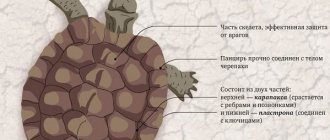Nature has given life to hundreds of amazing creatures. Some amaze with their beauty, others with their strength, and others with their size. The gray rat tries not to stand out and be seen as little as possible. Perhaps this is why few people know about the unique mental abilities of this animal, not to mention its gift of clairvoyance. The ability of rats to adapt to living conditions in which no other mammals can exist is also impressive.
The gray rat has not received either strength or large size from nature, but, being small and inconspicuous, it is capable of destroying millions of people, leaving them without food or infecting them with deadly infections. Humanity has been fighting rats for centuries, but has not yet come half a step closer to victory. In some amazing way, tailed rodents masterfully avoid all traps, survive all adversity and continue to thrive. We invite you to get acquainted with their amazing life, very short, but bright and extraordinary, in many ways similar to the lives of people.
History of origin and settlement
Paleontologists have found that the gray rat species appeared in the Pleistocene, that is, approximately 2.5 million years ago. Other rodents, including mice, already existed by that time. The next ice age that began killed many of them, but gave the gray rat the opportunity to establish itself as the most progressive species. In those distant times, these animals lived only in the territory of modern China.
From the south and east their habitat was limited by seas and oceans, from the west by insurmountable mountains, and from the north by a glacier. When it began to melt, the rats moved to new lands. Colonization proceeded unusually slowly. For more than 13 thousand years, they only reached the present-day Transbaikalia, where to this day they live well in natural conditions. Rats were encouraged to spread across the planet by people who began to actively engage in trade and navigation. About 2,000 years ago, tailed stowaways entered India on ships, from there they got to Persia, and then moved to Europe, America, Africa, and Australia. Now they are not found only in places where they have absolutely nothing to eat - in Antarctica, in the Arctic and in certain areas of the desert.
How to feed baby rats
During the first 14-16 days, rat cubs feed only on mother's milk. Then they begin to become more active, crawling around the nest and even trying the food that their mother brings. 3 weeks after birth, the pups eat vegetables, grain mixtures, lean meat, eggs, cottage cheese, and fresh herbs.
There are often situations when small rats are left without maternal care. This happens for various reasons:
- Mom doesn't have enough milk;
- the female died after giving birth;
- someone touched the little rat with their hands, and the mother abandoned him.
In each case, the babies will have to be artificially fed, otherwise they will die.
Orphaned cubs must be kept warm. A lot of paper napkins are placed in the nest. They are replaced as they become dirty. To warm little rats, you can use a rubber heating pad or a plastic bottle with warm water.
To feed the litter, a cat or dog milk substitute, which is sold at a veterinary pharmacy, is suitable. If you can't find it, you can use baby formula. To increase the nutritional value, add a little condensed milk with a fat content of about 12% or glucose, as well as a little calcium gluconate.
It is convenient to feed small rats from an insulin syringe without a needle. The animal is carefully taken vertically in the left hand, and the head is held with the thumb and forefinger. The tip of the syringe is inserted into the mouth. The piston is moved very slowly so that the little rat does not choke.
Attention! If milk flows from the spout during feeding, it must be removed with a napkin. To clear the nasal passages of liquid, you should pinch the little rat's butt. When it beeps, the milk will completely leave the respiratory tract.
In the first week of life, rat pups are fed every 1.5 hours, then every 2.5-3 hours. At this age, they eat no more than 0.3 ml of formula at a time. It is quite simple to determine that the baby is full - his stomach is clearly visible through the thin skin on his stomach. It looks like a white transverse stripe. If its length is two-thirds the width of the body, then the stomach is full. Week-old rat pups eat about 0.5 ml of milk at a time, and at the age of 10-12 days - 1 ml.
Attention! Before each feeding, the baby rats receive a abdominal massage. This is necessary to improve intestinal motility. Gently move the fingertip clockwise for about a minute. Usually, after such stroking, the animals empty their bowels.
Etymology of the name
In the scientific world, the name of the gray rat sounds like Rattus norvegicus. It appeared after a biologist from England, John Berkenhout, saw these animals in the port and wrote a description of them. He was sure that ships arrived in England only from Norway, so with a clear conscience he dubbed the species he “discovered” the Norwegian rat, although these rodents did not exist in that country at all at that time. And they arrived in Foggy Albion, most likely, from Denmark and could well have become Danish rats if Sir Berkenhout had a little better understanding of navigation. Pasyuk, or Patsyuk, is another of their names, familiar to many Russians, Ukrainians and Belarusians. So, what are the heroes of our article?
How long after birth can you pick up
Seeing small newborn lumps swarming around an adult female, you just want to pick them up or at least touch them. Under no circumstances should this be done. Firstly, their body is still very fragile and the slightest wrong movement or compression can lead to injury to the baby. Secondly, after you hold the baby in your hand, its coat will acquire a specific human smell. Mother rats often abandon such babies: they stop taking care of them, don’t feed them, and don’t keep them warm. The result is inevitable death. Despite all the caring behavior of females towards their offspring, they can kill a baby that emits an alien odor.
You will be interested to know what to do if decorative rats fight among themselves.
By three weeks, babies already look strong enough and can eat “adult” food. Even if the female does not want to accept a cub that smells like a human, it will be able to live and feed on its own. Experienced rat breeders recommend not delaying the taming of decorative rats. When the animal is a month old, it needs to be taken as often as possible, then the baby will be more obedient and affectionate.
Gray rat: description
These animals have an unattractive appearance. The body of adult males can grow up to 25 and sometimes up to 30 cm in length, plus a bald, thin tail about 20 cm long. The body and tail of females are slightly shorter. The muzzle of gray rats of any sex is not elongated, like their black relatives, but more rounded, the ears are small, the eyes are small, similar to black beads.
The coat color, as the name suggests, is gray, the belly and sometimes the chest can be white. There are guard hairs along the body of rats. They are longer and thicker. In individuals living close to people, the coat color has a reddish or brownish tint, which is why many consider them not gray, but brown. Rodents bred in captivity are distinguished by an incredible variety of colors. Here you can find any combination of white, black, red and brown, although the species is still called the gray rat.
Their teeth do not fall out, but grow throughout their lives, so the animals must constantly gnaw on something to wear them down.
How to get rid of mice in the cellar using folk remedies. Chemical methods
Rats in the basement can be removed using special pesticides. There are three types:
- Chronic action.
- Instantly fatal.
- With the effect of embalming the animal's body.
All these substances answer the question “How can you poison mice in the cellar?” Chronic chemicals cause the death of the animal a few days after consuming the poison. The rodent's relatives will not be able to understand what is going on, and will also gradually die.
If you use instantly killing poisons, then in this case it is worth finding out approximately how many rats and mice are in the basement: if there are too many of them, then after the death of several individuals the rest will understand what is going on and will stop touching food with poison.
When using chemicals with the effect of embalming a corpse, the body dries out. The skeleton is preserved for a long time without emitting an unpleasant odor. You can easily remove the remains yourself or leave this task to the ants.
Here are the basic chemical methods for getting rid of mice and rats.
How you can get rid of rodents in a cellar using folk remedies can be suggested by various cunning traditional methods, among which there are many effective ways to solve such a serious problem.
The scattering of wood ash irritates the animals' paws, and then the rodents try to lick them. As a result, irritation also appears on the tongue. Powerless, the animal will run away from the cellar.
Sawdust mixed with mothballs will repel rodents for a long time if this product is placed around the perimeter of the entire basement.
Mice cannot stand the smell of burning fur, so it is worth burning a piece of fur from some pet in the cellar. Rodents must leave the room immediately.
With the help of the scent of chamomile, you can get rid of the animals once and for all - you just need to place the dried flowers along the walls where there may be holes, as well as in the corners.
The smell of clove oil, as the folk method suggests, is perceived by mice as dangerous, as a result of which they avoid the unfavorable place.
Blackroot, also called rat racer, causes serious discomfort to rats and mice: animals cannot stand its smell, but for humans, on the contrary, it is invisible, although it poses a threat to his health. This method should be used carefully and once - hang the soaked roots in the basement, and after the rodents leave, ventilate the room.
Nutmeg, fish oil, mint - these and many other substances will be equally useful in the fight against mice and rats that have infested cellars and basements.
The fight against mice in the cellar can be carried out using not only toxic substances, but also with the help of sounds harmful to these animals. Let's look at the main methods of using them.
Since rodents are shy animals, you can clearly understand what mice are afraid of. For example, they are afraid of human smell. But they are also wary of the harsh sounds that sound systems make at full volume. However, please note that the mice will most likely return after the hardware is turned off.
On the contrary, ultrasounds, which are not detected by the human ear, will help completely drive mice out of the basement. The animals, in turn, clearly hear these frequencies, which puts them under nervous tension. It is necessary to keep the device turned on constantly, then the rodents will leave the basement in 2-3 weeks.
How to destroy rats in the cellar when it is not possible to buy special equipment or any expensive chemicals? The answer here is quite simple - you can use pets for these purposes. What pets can help remove rodents from their temporary habitat once and for all?
- Ferrets.
- Hedgehogs.
- Some dog breeds.
- Cats.
As can be seen from the list, animals that hunt rodents can be found in any household or even in urban dwellings, so it is not at all necessary to purchase a specific “predator” to clear the basement of pests.
Cats are the most commonly owned pet, and for good reason – they are both affectionate and good hunters. If you limit their diet, they will be forced to get food in some other places and will be able to find food in basements where mice have infested. The person will get rid of a serious problem, and the pets will be well-fed.
There are two types of mechanical methods:
- leading to the death of the pest;
- humane.
They are used only if the number of rodents is insignificant. Mice, with the help of a special enzyme in their urine, are able to signal danger, which can reduce the effectiveness of these methods of killing mice.
Features of behavior
These creatures prefer to live in groups and endure loneliness only when necessary. The family always has a main male, a pair of his deputies, a harem of females and simple members (young individuals, weak males) who do not take part in reproduction. There is no mutual assistance between them, just like there is no communal labor like ants or bees. Among rats, everyone cares only about themselves, but if a stranger suddenly joins the family, they kill him together, although, in principle, they are not aggressive and do not attack unnecessarily.
The gray rat also resorts to the help of its fellow tribesmen to obtain food. The photo above shows how they steal birdseed as a well-coordinated team. Another feature of a collective organization is the fact that a poison that kills one member of the family will be avoided by others. These animals are smart and quick-witted. An experiment was conducted in which cheese was placed in a maze, and the rat not only quickly found the treat, but also remembered the path, and if the food was moved to another place, the animal no longer used the old path, although the smell of cheese remained there.
When to transplant young animals
The development of baby rats occurs rapidly. At the age of 25 days, it is already possible to place the male rats separately from the girls. This recommendation applies more to males, as they can mate with sisters or their mother. After about a month, it is advisable to seat the males, otherwise they will start fighting with each other.
The young animals are provided with fully equipped cages, the same as those for adult rats. Each animal should have its own resting house. To increase physical activity, a running wheel, ladders and tunnels are placed inside.
The diet of the younger generation must include fresh greens, wheat sprouts, as well as animal foods, which contain a lot of protein. 1-2 times a week, rat pups are given fish oil.
At 5-6 weeks, the rats can be given to new owners. You shouldn’t delay this, because the younger the pet, the easier it will tolerate a change of environment.
Gray rat: habitat
In nature, these rodents settle only where there are sources of water, without which they cannot survive even three days. They prefer lowlands overgrown with vegetation, but can also climb mountains. They don't bother people at all. Only rats that live near humans are harmful. Some are permanent tenants, others are temporary, leaving in the spring to live freely and returning in the fall. They live in boiler rooms, basements, barns, and can live in high-rise buildings, but they rarely rise above the 9-10th floor.
In cities, rats have chosen sewer systems and subways, port docks and store warehouses. In villages, they live on livestock farms, poultry houses, and fruit and vegetable processing factories. One rat family controls a territory of up to 2 thousand m2, which all its members regularly mark with urine. In case of food shortage, rodents can expand the boundaries of their kingdom.
How to store potatoes from rats. Stages of potato harvesting
Harvesting tubers consists of several stages:
- Digging potatoes;
- Drying tubers;
- Transportation (or transfer to the storage location);
- Bulkhead, sorting;
- Bookmark for storage.
The last stage can vary greatly. This depends on the gardener’s capabilities (availability of storage) and his preferences.
Some people have a cellar, others only have a balcony for storage.
You can store tubers in pits, and if there is a large quantity and space available, you can build trenches.
Digging up potatoes
It’s easier, of course, to dig potatoes mechanized: with a walk-behind tractor. But not everyone has such a mechanism.
And the areas under potatoes are generally small; you can handle them with a shovel or a pitchfork.
Therefore, we harvest potatoes using these two ancient, but relevant, methods.
What exactly is up to the grower to decide.
They try to grow potatoes on light soil; if this is the case, a pitchfork will do the job. Dense soil is too much for the forks; they may break or fail to turn out the bush properly.
In dense areas you will have to dig with a shovel.
Task: select all the potatoes, if possible, and preferably whole ones. It’s not 100% possible, but you have to strive.
Damage is inevitable: a shovel sometimes cuts a tuber, a fork sometimes punctures it.
That’s why it’s so important not to overexpose the harvest: while the tops are visible, it’s easier to navigate.
Procedure:
- The bush is dug up with a shovel or pryed up with a pitchfork, and then the tubers are picked by hand. You can help yourself with a small garden trowel or a wire-toothed digger. “Comb” the holes with these teeth.
- Accidentally damaged potatoes are immediately sorted separately: the first to be used for food is unsuitable for storage.
- If it is dry, the tubers are laid out directly in the field to dry. But if there are pests, especially potato moths, the produce must be removed immediately. And away from the growing area.
- When the potatoes are healthy and free from pests, they can be stored separately as seeds. And don’t remove it as soon as it dries, remove the food from the field first.
- Green the seed a little: this way it will become more stable and will not get sick in storage. Or the waste will be minimal. Pests also do not like solanine, with the exception of the Colorado potato beetle. But the beetle is not present during storage; it prefers soil for wintering.
When carrying out greening, remember moderation. By exposing the tubers to the light and getting intensely green skin, you risk overdoing it.
The germination capacity of such tubers will decrease, and some may become non-germinating at all.
Only a slightly greenish color is acceptable.
Rat houses
In nature, gray rats build their home in a hole about 80 cm deep. The length of the corridor reaches several meters. In the very depths, the animals make a nest, insulating it with blades of grass, feathers, and hairs. The common gray rat, living close to the water, in order to avoid flooding during floods, settles in hollows or builds a nest in a tree. Rodents that live near people build nests from all available materials. They can make kubla in things, for example, in a closet that is rarely looked at, in carpets rolled up for storage, in hay that has been folded for storage. In nests, females care for babies, and several broods can be in one place at the same time, and mothers care for the children together.
How to protect the cellar from rodents. Extermination of basement rats
Quite often, residents of houses with a basement or cellar are faced with rodents that enter warm rooms in search of food.
It is quite difficult to fight this small scourge - they are very cunning and careful. All basement rats and mice have a highly developed instinct of self-preservation. Fighting them will require special means and considerable effort, but they cannot be allowed to live in the basement of the house - the consequences can be catastrophic. There is a lot of information in open sources on the Internet, including photo materials, about how much harm and damage these harmless animals can cause.
In order to get rid of rats in the basement, you will have to carry out a rather troublesome process, and the matter is complicated by the fact that one or another method does not work in all cases. Therefore, for a successful fight, several methods are used simultaneously to completely exterminate the entire colony.
Rats in the basement are very tenacious and tend to hide in the cracks of the house, crawling through minimal openings, literally the size of a ruble coin.
Rodents can be found especially often in the cellar in winter, when they seek to find a warm place. Gnawing holes even in concrete walls, they do not disdain metal crossbars. Even with a great love for animals, it is still worth thinking about how to get rid of mice in the cellar, since the damage they cause is too significant.
Numerous photos of owners affected by their invasion are the best confirmation of this. We can say that there are practically no obstacles for them.
A rodent in a cellar will leave it only when unfavorable conditions for living and reproduction arise. It is necessary to close all possible entry points to burrows and limit access to food products. The lack of food, one way or another, will significantly reduce the number of rats, and their reproduction will also stop. The remaining individuals die on their own.
Experts recommend covering doors and windows in basements or cellars with metal sheets, carefully sealing windows and pipe openings, as well as ventilation vents through which rodents can freely crawl. These methods will not immediately help get rid of rats, so they are rather preventative. For complete extermination it is necessary to apply a whole range of measures.
Nutrition
What does this rodent eat? The gray rat is an omnivore. In nature, its diet consists of insects, lizards, chicks, bird eggs, cereals, root vegetables, and fruits. Rodents living near water eat small fish, mollusks, and crustaceans. Rats that settle in populated areas eat everything that they can steal from a person - any prepared food, any products, garbage, leftovers. It’s hard to understand why, but they chew paper, clothes, shoes, polystyrene foam, wooden products, electrical wiring - in short, everything that their powerful teeth can bite through. In villages, these little monsters eat chickens, newborn rabbits, and bite off the paws of adult rabbits that are locked in small cages. Male rats even eat their own children. Females are a little kinder; they eat only those babies that seem weak to them. They can survive only 4-5 days without food.
Reproduction
Fantastic fertility explains why, despite all the measures taken, the gray rat population increases every year. Reproduction in nature of these animals is seasonal, but in populated areas, where there is always food and warm shelter, it is year-round. Females bear offspring for about 3 weeks. There are most often about 10 rat pups in a litter, but there are known cases when there were up to 20. After lambing, 18 hours later, the new mothers do not refuse to mate again. Babies enter the world as tiny helpless lumps weighing up to 5 g. They are blind and naked. Their mothers clean them, feed them milk, and warm them. On the 14th, or less often on the 17th, the children’s eyes open, and after another 7-8 days they begin adult life. Young females rarely mate immediately. As a rule, this process begins within a year.
Who is better to have: a boy or a girl?
All decorative rats are sociable, unpretentious, smart and easy to train.
When choosing a pet, you should take into account its character and the temperament of the owner. Most boys are phlegmatic, most of the time they rest in their house, hammock or in the arms of their owner. They sleep much more often than girls, eat more, and move less.
From 6–8 months, boys experience hormonal changes. This is manifested by bursts of unreasonable aggression towards relatives and the owner. You need to be prepared for this. In addition, males mark territory and people for whom they feel sympathy. Their urine has an unpleasant, pungent odor that is difficult to get rid of. For this reason, their cage has to be cleaned more often than the females’ home.
Rat girls are more active and restless. They bite owners more often than boys. Pregnant or recently given birth females who protect their offspring are especially aggressive.
Female rats also mark their territory, but much less often than male rats. In addition, their urine does not have such a strong odor.
Rats of both sexes are more active at night and sleep during the day. Therefore, the owner must accustom them to their schedule: games in the evening, sleep at night.
Interesting! The activity of female rats depends on hormonal levels. They are almost constantly in heat; their estrus occurs at intervals of 5–10 days and lasts 14–24 hours.
Males get along better with other pets than females.
Experienced breeders strongly recommend keeping rats in groups (from 2 individuals). They need communication with their relatives for a full life and good health. Solitary confinement does not suit them.
Achievements
The gray rat (pasyuk), if nothing threatens it, is very good-natured, busy only with getting food, and in search of it it can cover up to 20 km in a day. If she has to flee, she is able to reach a speed of 10 km/h, jump over an obstacle up to 2 m high, dive, swim more than 20 km. There are societies that organize rat Olympics, which include the so-called “pentathlon” - running, jumping, overcoming obstacles (climbing), lifting weights and tightrope walking.
A rodent can stay in water for up to 4 days. It likes the climate to be mild, but even in temperatures down to -18 °C it lives without any particular difficulties, and even reproduces. Confirmation of this is rat nests with live pups found in freezers, made in animal carcasses. They are also comfortable in boiler rooms, where the air temperature is about +45 °C. Rats do not die from radiation up to 300 roentgens/hour, and they are able to feel it with their nose.
Explosive character
In 2013, the Chelyabinsk explosion protection squad “Vympel” accepted the rat Marta into service.
— In Libya, mine rats have long been used to search for mines. “I was inspired by the idea of raising the same explosives,” said the head of the detachment, Igor Gamov .
The HeroRAT (“Hero Rat”) project was invented in 1995 by Bart Uitjens . The African continent leads in the number of uncleared fields. A light rat can jump on a mine, but it won't go off. Such “sappers” also serve in Cambodia and Thailand.
Capabilities
The gray rat lives up to 3 years, but this is only if it is not sick, there is plenty of food, and there are no enemies. Usually such an idyll occurs only in laboratories or in home care. In nature, rats rarely live longer than one and a half years. Their abilities are unique. The fact that they anticipate earthquakes is not particularly surprising, because many animals can do this. But the fact that rats can predict where a shell will land is truly amazing. During the war, people, knowing about this talent of rodents, fled to those huts where the rats were hiding. A unique incident occurred in a market in France. It was moved to a new place, and already a day or two before, all the market rats had moved there, although, of course, no one informed them about this. Scientists have found that gray rats make about 5 thousand sounds, that is, they have their own “alphabet”.
These animals remember our faces and feel our character. They are able to pick up the slightest noise even in the 40 kHz range, which is used in electronic repellers. They distinguish two colors - blue and greenish. They dream, love classical music, and know how to laugh.
How to raise rat pups to be tame
If you don't give little rats enough attention, they will grow up wild. Therefore, as soon as the animals begin to leave the nest, you should begin to accustom them to your hands. It is necessary to approach the cage more often, carefully pick up the babies in your hands, and stroke them on the back. All these actions should be accompanied by affectionate conversations. In order for the little rats to form pleasant associations, it is advisable to treat them with some kind of treat during communication.
Attention! The main thing in taming is regularity. Rats grow very quickly, so it’s easy to miss the right time for raising them. To achieve results, you need to pick up the babies several times every day.
When the rats become tame, they can be trained to perform various commands and simple tricks. Training is based on conditioned food reflexes. That is, all correctly performed movements are necessarily rewarded with a treat.
A rat can be taught:
- leave the house at the sound of a bell or whistle;
- return home on command;
- stand on your hind legs;
- to spin;
- stay put.
Rats are very smart animals and are easy to get along with. In order for defenseless tiny animals to turn into affectionate and gentle pets, you need very little - pay more attention to them while they are still small.
War of blacks and grays
Once upon a time, black rats reigned supreme in Europe. They were known about and destroyed back in the ancient period, and in the Middle Ages they even organized teams of professional rat catchers. Despite all efforts, in the 14th century, millions of people died from a plague carried by black rats.
They are smaller than gray ones, do not like to move long distances and live in basements, preferring to live in attics and roofs. Now in cities the gray rat is replacing the black one, since it turned out to be less intelligent and weaker. If there is enough food, the grays do not bother their black brothers and crowd them out only when there is a shortage of food. In settlements remote from the sea, for example in Moscow, there are very few black rats left, but in coastal cities their numbers are huge, and on ships they still dominate.
Pest Control
The extermination of gray rats is carried out all over the world. Despite this, their numbers remain constant. Humanity is forced to fight rodents, inventing different designs, drugs, and means for this.
A poison of instant, long-lasting action is used against rodents. Traps, traps, adhesive substances, poisonous baits, folk remedies with a repellent odor. The newest invention of mankind is ultrasonic repellers and electric traps. The method is selected based on one’s own preferences and places of rodent infestation.
Benefits and harms
It is believed that a small gray rat is capable of leaving a sixth of the world’s population without food (photos of rodents are presented in the article). An adult needs only 20 g of food per day, but over the course of a year this figure increases to 10-12 kg. If you remember that there are now almost 18 billion rats on the planet, you can imagine how much food they eat.
Rats can infect humans with such deadly diseases as plague, Q fever, typhus, as well as non-lethal, but also very dangerous helminths, staphylococci and streptococci.
These animals spoil things, furniture, leave houses and even entire villages without electricity, gnawing through electrical wiring.
And yet they bring us benefits that are difficult to overestimate. Geneticists have found that the genes of humans and gray rats have more in common than those of humans and monkeys. This makes it possible to carry out highly complex genetic research, which is also facilitated by the incredibly fast reproduction of rodents. Scientists are testing new medications on them, studying many deadly diseases in order to understand how to treat us humans. Therefore, rats deserve not only hatred, but also respect.
How to determine the sex of baby rats
Unlike adults, it is not easy to distinguish the sex of newborn rat pups and this can be done when the babies are at least four to five days old. Since small rodents are devoid of fur, you can determine the sex of a baby rat by the nipples on the tummy, which resemble tiny pimples. The presence of mammary glands indicates that this is a girl, because boys, both in adolescence and in adulthood, do not have nipples.
Also, in male babies, you can see small dark spots located between the genitals and the anus, in the place of which testicles will form as the animal grows older.











